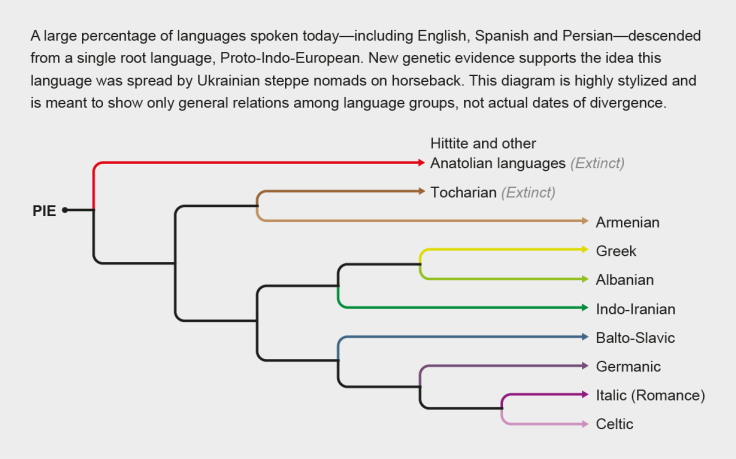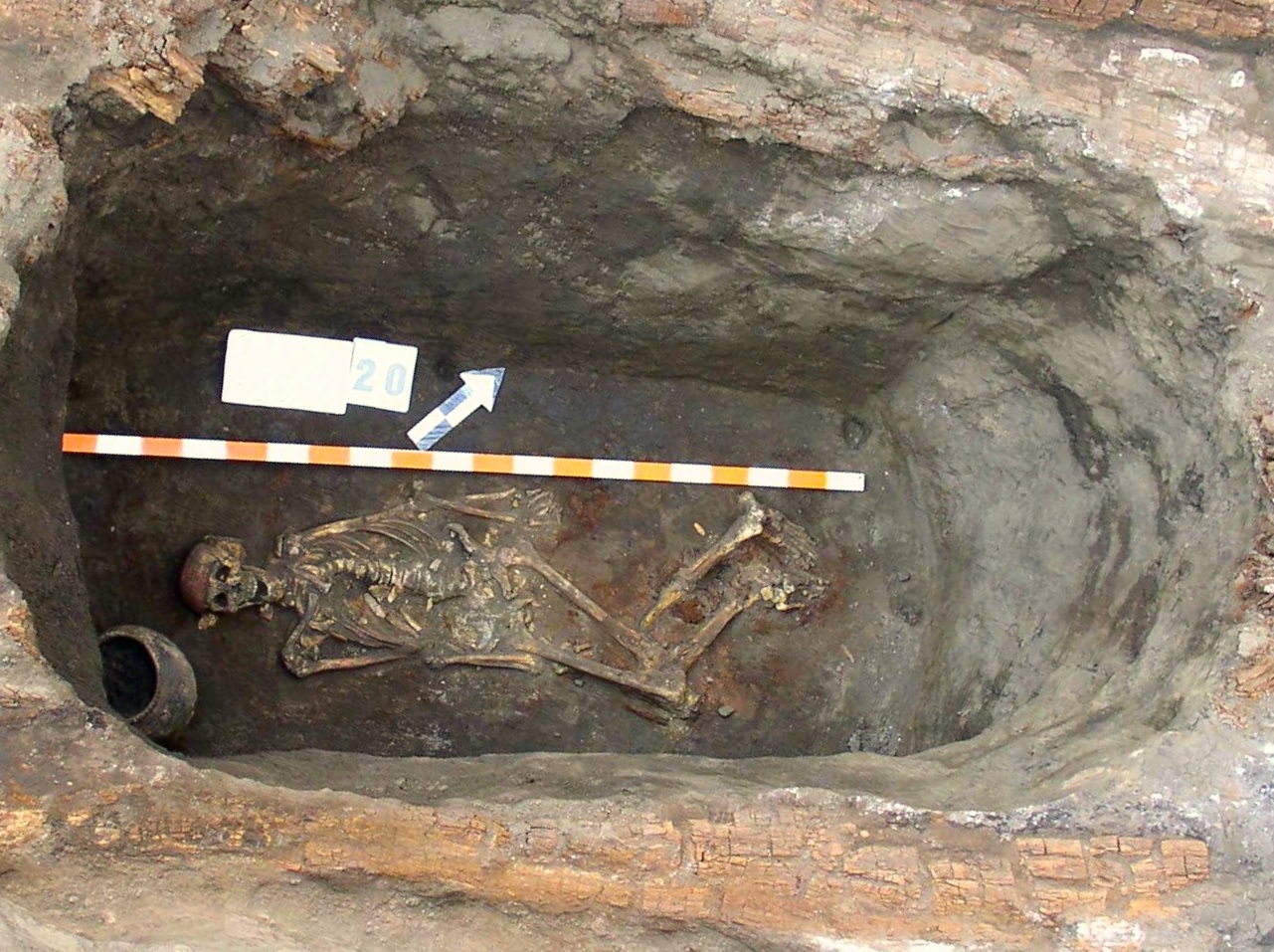Proto-Indo-European or PIE is the term coined for a ancestral language to the group of languages from Europe and parts of Asia, like English, Spanish, Hindi, Russian and Persian. No written record of PIE exists. We infer PIE because many of these languages have similar words, like mother, indicating they share a common root language. Marija Gimbutas in the ’50’s proposed the Kurgan hypothesis, that the PIE root language originated in the steppes of central Asia. Interestingly, she identified the Yamnaya group of herders from the southern grasslands of modern-day Ukraine who domesticated the horse the key population behind the PIE root language.

A little more detail has been figured Yamnayans. They are blend of three ancestral populations. The dominant group are the Mesolithic Eastern Hunter-Gatherer (EHG), made of the Y-haplogroups R1a and R1b. The Caucasian Hunter-Gatherer (CHG) admixture, makes up another 15-25% of their genomes. This admixture is mainly associated with Y-haplogroup J. The third admixture was the Western Hunter-Gatherer (WHG), representing about 6% of Yamna genomes, which composed of haplogroup I, and to a lower extent also C1a2 and F.

Haak et al. (2015) corroborated this theory through a genome-wide study of 69 ancient skeletons from Europe and Russia. Yamnaya contributed to 73% of the DNA of Corded Ware skeletons of eastern Germany, and 38.8–53.5% of DNA of modern Western, Central & Northern Europeans. Southern Europeans had 8.5–32.6% Yamanaya DNA in and much less frequent in Sardinians (2.4%–7.1%) and Sicilians (5.9–11.6%). In other words, the study found that Yamna brought genes, horses and likely language to Europe.
There is a paper in the Journal of Human Genetics last June that reexamined the role of the Yamna. These authors studied the mitochondrial DNA of 12 Yamnaya individuals. The study also included the mtDNA of immediate predecessors and descendants. They lived around the same time of the peoples studied in Haak et al.’s prior study. The mitochondrial DNA of the most recent specimens a flow of genes from central Europe, including present-day Poland, Germany and Sweden, which means there were back and forth migrations between central Asia and eastern Europe.
The domestication of the horse allowed the Yamna to bridge their culture and language from India & Iran on one side and Europe, on the other side. These horsemen brought a unique genetic footprint as well as a linguistic footprint to both areas of the world which persist to this day. Just exactly how much the immigration happened is what we are currently delaying with but without written words, we are studying the transmission of genes as a surrogate to language transmission.

One of the answer is in the hungarian language. Typical archaic inflected language.
In it including the words about 40 group people.